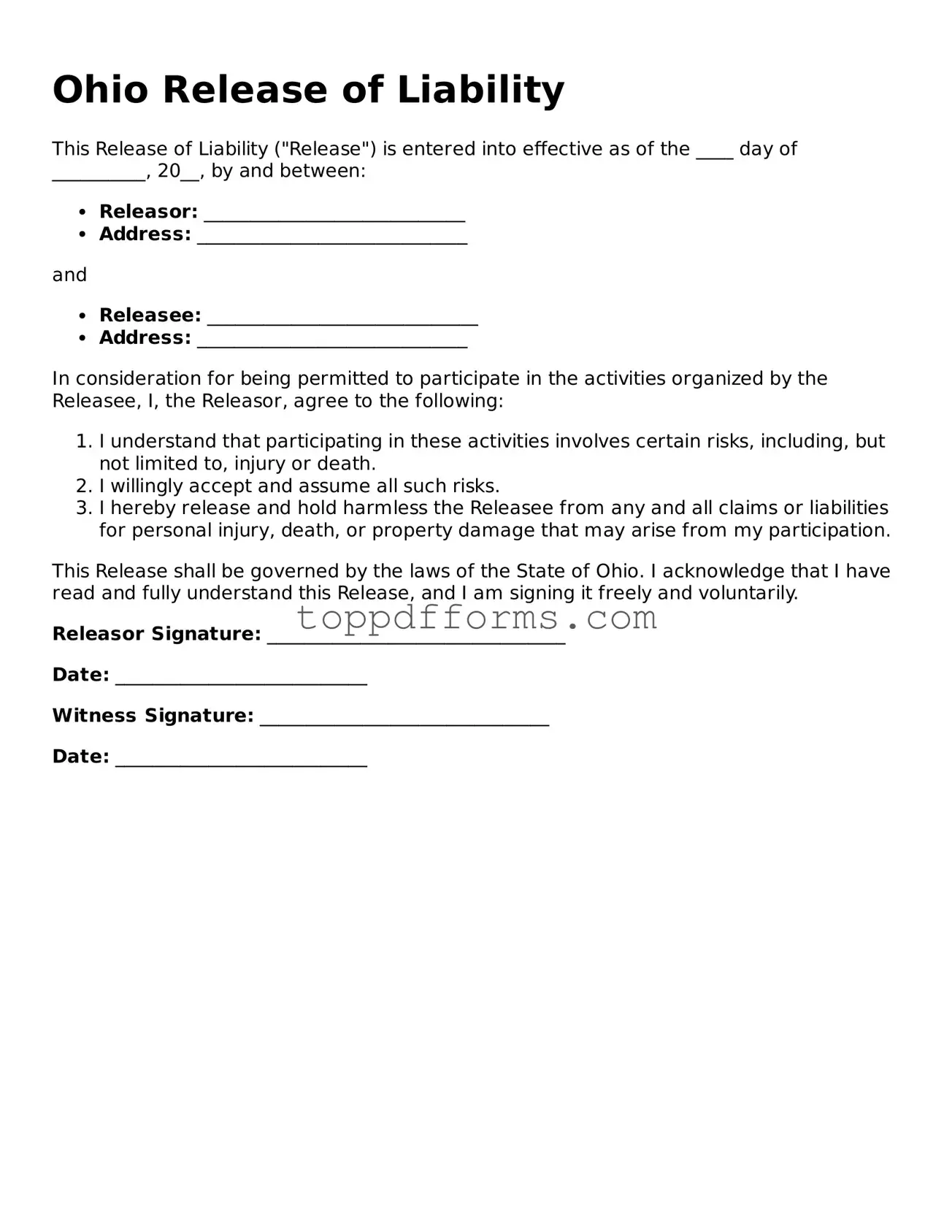What is an Ohio Release of Liability form?
The Ohio Release of Liability form is a legal document that protects individuals or organizations from being held liable for injuries or damages that may occur during a specific activity. By signing this form, participants acknowledge the risks involved and agree not to hold the organizer responsible for any accidents or injuries that may happen. This form is commonly used for activities like sports events, recreational activities, and other events where risks are present.
Who should use a Release of Liability form?
Any organization or individual that hosts an event or activity with potential risks should consider using a Release of Liability form. This includes sports teams, recreational facilities, schools, and businesses offering adventure activities. Participants, including minors, should also be encouraged to sign the form to ensure they understand the risks involved and agree to the terms. It’s essential for protecting the host from legal claims related to injuries or accidents.
Is a Release of Liability form enforceable in Ohio?
Yes, a Release of Liability form can be enforceable in Ohio, provided it meets certain legal requirements. The form must clearly outline the risks involved and be signed voluntarily by the participant. It should not contain any ambiguous language. However, courts may not enforce a release if it is deemed unconscionable or if the liability waiver attempts to release a party from gross negligence or willful misconduct. It’s advisable to consult with a legal professional to ensure the form is properly drafted.
Can a minor sign a Release of Liability form in Ohio?
In Ohio, minors cannot legally enter into binding contracts, including a Release of Liability form. However, a parent or guardian can sign the form on behalf of the minor. This signature indicates that the parent or guardian understands the risks involved and agrees to the terms of the release for their child. It’s important to ensure that the form clearly states that it is being signed on behalf of a minor to avoid any potential misunderstandings.
